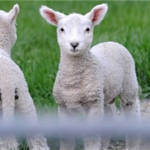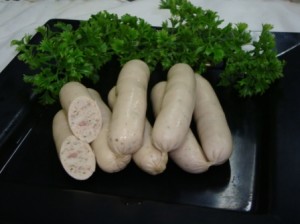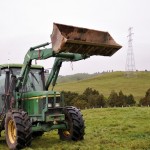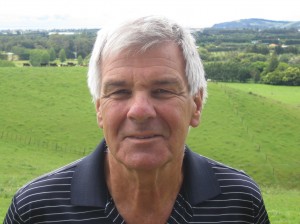 New Zealand meat companies’ high debt levels, must be of concern to the banks, says meat industry commentator Allan Barber.
New Zealand meat companies’ high debt levels, must be of concern to the banks, says meat industry commentator Allan Barber.
Silver Fern Farms (SFF) is operating on a three month extension to its bank facility which expired at the end of September, but reported current (expiring within 12 months) loans of $316.7 million at the end of its 2012 financial year, Barber writes.
In its last published annual accounts to September 2011, ANZCO had current and non-current loans of $220 million which must surely have increased in the very challenging 2012 year. Lastly at the end of September Alliance had $331.8 million of assets and non-current loans of $196.1 million which are clearly not causing any immediate concern.
The two big co-operatives published their annual reports last week and neither makes pretty reading. Both results benefited from a large tax loss which, to be effective, must of course be offset eventually by profits.
Alliance’s financial position was fully flagged in its announcement of a $50.8 million post tax loss including the $19.4 million write down of its Mataura sheep processing unit, which was actually a pre-tax loss of $70.6 million before tax credits. Its balance sheet with 51 percent equity ratio is still strong, although not nearly as strong as twenty four or even twelve months earlier.
SFF had already announced an after-tax loss of $32.2 million which was also, in reality, a loss of $44.2 million pre-tax, which included no restructuring costs. Debt rose during the year from $111 million to $316 million, a massive increase which was largely accounted for by the inclusion of $35 million insurance payout for Te Aroha in the 2011 accounts, the cost of the rebuild, $83 million of higher livestock and finished product inventory, and the funding of the annual loss.
A careful study of the annual reports sheds an interesting light on the company’s banking arrangements. Its 2010 report stated that its facilities had been renewed for two years till September 2012 and included $75 million for repayment of its SFF030 bonds. The 2012 report notes that its facilities expire in September 2012, hence the classification of all secured loans as a current liability, as was the case in the 2011 accounts.
I understand from chief financial officer Keith Winders that SFF has been operating on a temporary extension to its banking facilities since the end of September; he claimed this was quite normal because of the annual renewal arrangement with its bankers. However it appears unusual to me, because firstly SFF previously had a two year facility and secondly it can’t be ideal to carry $300 million of bank loans into the new financial year without negotiating secured banking arrangements. However, the directors must have received solid assurances of the company’s continued trading ability to allow it to continue to operate and incur liabilities.
Winders was also quite definite that there would be no significantly different terms and conditions attached to the new facility when finalised. This suggests the operating environment since September must be at least stable, although there is little evidence of an improvement in market demand, especially for sheepmeat which caused all the problems last season.
The only major improvement I can see is the reduction in lamb prices which have fallen from $140 to $90 in a year for a 17.5 kg lamb, but the season hasn’t yet got sufficiently into its stride for trading performance to have recovered many of last year’s losses.
What is absolutely crystal clear is that the banks will be watching their exposure to the industry like hawks and will demand some dramatic improvements for the rest of this season for which the critical period will be from January to May. Last season’s problem was that the price was much too high to start with and none of the processors was brave enough to lead the way to get it down when stock numbers were low.
I imagine none of the meat companies will have any appetite for chasing market share at the expense of margin this year and, if they do, their banks will be down on them like a ton of bricks. Farmers had a bonus last season, but there’s no point in hoping for a repeat any time soon. This presupposes that processing capacity is fairly well aligned with livestock volumes because the last thing the industry can afford is a procurement led price war.
Unfortunately my impression is that there is still excess capacity in the country, even after the closure of Mataura, but for the time being the companies will all be determined to rebuild their balance sheets. Past experience suggests industry peace will only last as long as necessary to repair the damage before the companies find the prospect of grabbing market share too hard to resist.
The only long-term remedy will be rationalisation of processing capacity and ownership, combined with seasonal supply commitment like the dairy industry. The banks are one of two critical factors in a change of this nature, but they would have to work together and accept write-offs in the interest of a lasting solution.
Farmers are the other critical factor, but the process of converting them to seasonally committed suppliers is a slow one and nothing will make this happen overnight.
The meat industry appears likely to be consigned to a further period of instability, but this season may give some indication of whether it is heading in the right direction.
This item has appeared at interest.co.nz and also at Allan’s own blog Barber’s Meaty Issues.
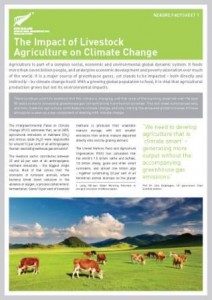 The New Zealand Agricultural Greenhouse Gas Research Centre (NZAGRC) has produced its first three new factsheets, which are aimed at providing background and a broader context to the work of the Centre and the challenges this country faces regarding climate change and greenhouse gases (GHGs).
The New Zealand Agricultural Greenhouse Gas Research Centre (NZAGRC) has produced its first three new factsheets, which are aimed at providing background and a broader context to the work of the Centre and the challenges this country faces regarding climate change and greenhouse gases (GHGs).

